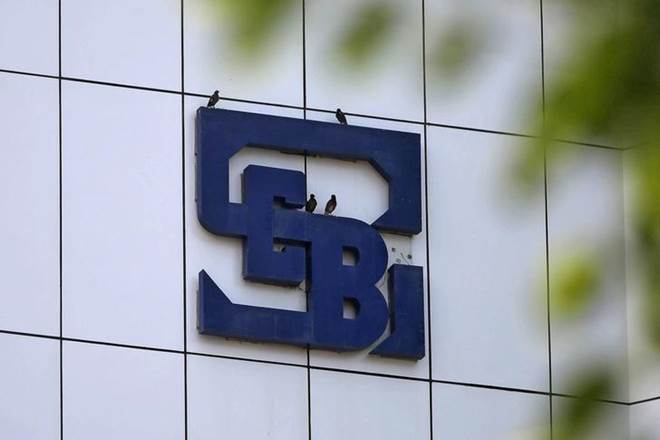This article is written by Mohit K Shah, pursuing a Diploma in Companies Act, Corporate Governance and SEBI Regulations from LawSikho.com.
Table of Contents
Introduction
For running stock exchanges smoothly, there are various intermediaries established to carry out various work related to the trading of securities in the stock exchanges. Out of all intermediaries the “Clearing Corporations” is a very important organ of the stock exchanges and for other stakeholders. After the enactment of this Clearing corporation, the execution of trade became very easy. Clearing corporation is there to clear and settle the trade. After the establishment of this clearing corporation, Settlement took earlier and it seems very transparent for the trade settlement. Before the enactment of this clearinghouse, for clearing and settlement the trade, it took a long period but after the upraise of this clearing corporation, it took two working days after the trade. Its main aim is to clear and settle the transaction promptly and efficiently.
Definition
A clearing corporation is an organization associated with an exchange to handle the confirmation, settlement and delivery of transactions.
In Indian clearing corporations are governed and regulated by the Act and regulations. The main governing Act is Securities Contracts (Regulation) Act, 1956 [As amended by the Finance (No. 2) Act, 2019] as amended by time to time to read with the securities contracts (Regulation) (Stock Exchanges and Clearing Corporations) Regulation. 2018.
In the above mention regulation, the said Clearing Corporation has been defined as under:
As per sub-clause (d) of Regulations 2 of securities contracts (Regulation) (Stock Exchanges and Clearing Corporations) Regulation., 2018 “clearing corporation” means an entity that is established to undertake the activity of clearing and settlement of trades in securities or other instruments or products that are dealt with or traded on a recognized stock exchange and includes a clearinghouse.

Understanding of Clearing Corporation and Future Contracts
Clearing corporation’s main objects are divided into twofold:
- To clear the trade.
- To clear the trading transactions.
In the stock exchange, there are so many types of securities traded such as Equity, Future and Option, Currency Derivatives and commodities are trading in the stock exchange out of this some trade in the future predominated date( buyer take delivery on a certain date and seller will deliver on a certain date) they call it as Future contracts or Forward contract. In Indian, Forward contracts are traded with the expiry date. Before the incorporation of the clearing corporation, the execution of trading and settlement of futures contracts was very difficult. Let us understand the role of the clearing corporation and its working functionality with illustrations.
Let’s assume that A person named ” AB” is residing in Ahmedabad and he is having trading and Demat account with “QIB” and AB wants to purchase 500 shares of “Reliance Industries” at the rate of 1100 and at the same time CD who is residing at Bhopal and he had his trading and Demat account with “IPO” wants to sell his 500 shares of “Reliance Industries” at the price of 1100. QIB and IPO both are registered brokers with the stock exchange. AB and CD did not know each other but how this trade is executed is important now due to technology advancement and with the help of the clearing corporation. This trade is executed like this: Once AB places a demand of buying this script with his broker and at the same time the CD will also place his willingness to his broker and at the same time price and share quantity is matched the said order is executed. But how AB will get his 500 shares and CD will get his money after selling the Share. At this juncture, the clearing corporation’ s role comes into the play. Its main aim is to clear and settle the trade. Therefore when AB broker releases money with exchange and CD ‘s broker will release shares from CD Demat account. the clearing corporation settles that claim by crediting the 500 shares into AB’s Demat account and Money to the CD’s account. The main function of the clearing corporation is to settle this transaction smoothly and promptly, it is one example. In a stock exchange there are more than lakhs of trades executed and at that time clearing corporations play an important and crucial function to clear and settle the trade.
Role of Clearing Corporation
Like the above example, it is very clear that the clearing corporation has to do the activity of clearing and settlement of trading securities and other products which are traded at the stock exchange. Along with this in the regulation, the clearing corporation has to do “netting”. To understand the netting let me re-produce the definition given in sub-rule 5 of rule 2 of securities contracts (Regulation) (Stock Exchanges and Clearing Corporations) Regulation, 2018.
“Netting” means the determination by clearing corporation of net payment or delivery obligations of the clearing members of a recognized clearing corporation by setting off or adjustment of the inter- se obligations or claims arising out of buying and selling of securities, including the claims and obligations arising out of the determination by the clearing corporation or stock exchange, on the insolvency, winding-up, liquidation or resolution of any clearing member or a trading member or client or such other circumstances as the clearing corporation may specify in its bye-laws, of the transactions admitted for settlement at a future date, so that only a net claim be demanded, or a net obligation be owed.
This definition is very important for the understanding of the Clearing corporation’s role. The clearing corporation has the power to settle the claim i.e that AB had purchased 500 reliance shares for 1100 and AB Sold the same share at the price of 1050 i.e in the loss, at this time the clearing corporation will only recover 25000 to settle the trade from AB. Thus the clearing corporation is used when a company file insolvency, winding-up, liquidations proceeding company or parties tend to net the balance owed to each other.
Risk Management
Clearing corporation has played a vital role for the clearing and settles the trade which is more than crore or above turnover are doing on a day to day base, therefore, SEBI has enacted the strict regulations for the Clearing corporation such as for the incorporation of any clearing corporation has to maintain minimum 100 Crore, reference can be taken of rule 14(2) of the regulations “Every applicant seeking recognition as a clearing corporation under regulation 4 shall have a minimum net worth of one hundred crore rupees”. Furthermore, the clearing corporation has to create a Fund to settle trades. The said fund is created as per rule 37 of the regulation which is read as follow:
Rule 37(1): Every recognized clearing corporation shall establish and maintain a Fund by whatever name called, for each segment, to guarantee the settlement of trades executed in the corresponding segment of recognized stock exchange.
Rule 37(2): In the event of a clearing member failing to honour his settlement obligations, the Fund shall be utilized to complete the settlement.
These rules are created for the security given to reduce risks of its members from failed trades arising out of the defaults by their counterparties.
Moreover, as per the 29, the clearing corporation has to create a “Statutory Risk Management committee
Now let me explain how a clearing corporation is worthy of stabilization of Risk. Let’s take an example that One Share Broker Namely “QIB” is registered with a clearing corporation at the time of registration. The broker had agreed to deposit 20 lakh for the trading purpose on behalf of the broker and his client. But one day the market will hit down very badly and all transactions are done by QIB and its client will be in loss and the loss is more than 30 lakh and the said QIB became a defaulter and QIB is not able to pay the remaining 10 lakh to the exchange. In this scenario, the clearing corporation has utilized its fund which was created under rule 37(1) and 37(2) at that time the said corporation paid to the other parties and settled the trade.
To cure the risk the clearing corporation has collected two types of margin from its members. One is Initial Margin and the second one is Market to the Market margin. Initial Margin means to secure future adverse Movement of the price of concern security. Market to Market Means to cover the notional loss. ( for Example:- some In future contract, some script having lot size i.e reliance having a lot size of 500 and while buying or selling at the rate of 1100, 500*1100 = 5,50,000 so anyone who has to buy this script need not pay the 5,50,000 on the purchasing day but they take margin like in the range of 10% to 15% of trade value.) And For Market to market that means if any person is trading the share and sell or buy on the same day he may face loss or profit at that time difference amount will be credited or debited from the account of the concerned parties).
Conclusion
The clearing corporation has emerged as a big player for the stock exchange to run smoothly. With its heavy risk management mechanism and Strict SEBI regulations, clearing corporations creates trust, transparency, among all the people who are related directly or indirectly with trading or stock exchange. Due to this clearing corporation trading, the security with the exchange has become very prompt and user friendly. Transaction regarding securities is done smoothly and clearing and settlement of the trading is done in very efficiently and without any hindrance.
Students of Lawsikho courses regularly produce writing assignments and work on practical exercises as a part of their coursework and develop themselves in real-life practical skill.
LawSikho has created a telegram group for exchanging legal knowledge, referrals and various opportunities. You can click on this link and join:











